Graham Reid | | 5 min read
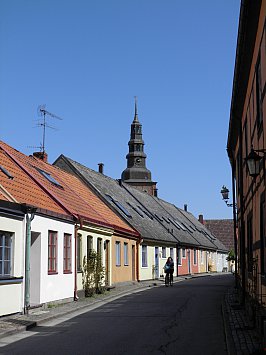
So this is where the killings took place. All around here the bloody brutalities were acted out under this vast sky hanging like an ever-changing canopy over these golden fields of rape plants in bloom, tall pine forests and the dramatic, wind-blown coastline.
Lone wolves and serial killers walked through this photogenic landscape and along these orderly streets of tidy, well-kept homes.
They hid behind the doors of remote country houses in this sparsely populated region.
Around here ritual murderers did their dreadful business, and cyber-hackers plotted the downfall of the world's economic system to be triggered from the ATM machine in the town square where, on this fine afternoon, cheerful fruit sellers offer bunches of swollen, ripe grapes and tart apples while old folk sun themselves on benches outside cafes.
Death and menace made their home in this charming place?
We are in southeast Sweden and around this port town of Ystad is where frightful murders occur.
At least they do in the fiction of Swedish writer Henning Mankell whose famous detective Kurt Wallander was based in this delightful little town.
These days – first through nine Mankell novels, then the 13-episode series for Sweden television of Mankell's plot outlines, and more recently in the award-winning BBC adaptation starring Kenneth Branagh – the character of thoughtful, weary, flawed and driven Wallander has achieved a global reputation. The books have been translated into 40 languages with more than 25 million copies sold worldwide.
Wallander may just be a fictional figure, but for television audiences he is compelling watching, and for Ystad and the surrounding region of Skane a boon for tourism. Ystad (population fewer than 20,000) has Wallander Walks and you can go to where he buys hotdogs, has coffee and meets friends. You can stand outside his office (well, the local swimming pool, the exterior of which substitutes for the police station in the BBC series) and have your photo taken at that ATM.

Given Ystad never did much harm to anyone and looks nothing less than picturesque, you have to wonder why Mankell would pick on such a lovely and genteel place as central to his murderous brutality and exploration of the Swedish character.
The answer lies in that port on the other side of the railway line. It is the gateway to Europe through Poland and Germany just across a narrow stretch of the Baltic. Two decades ago, according to Mankell, xenophobia started to emerge in this crossroads region, a place he has repeatedly referred to as “the Texas of Sweden” or “the South”, by which he means a borderland. Drugs and illegal workers passed through this town, so locals became increasingly suspicious of outsiders and itinerants as foreign workers became commonplace. The pretty little town quietly seethed in a way which the polite face of the Swedish character masked.
In the opening episode of the Swedish series, Wallander – played by Krister Henriksson – confronts an ultra-conservative group of post-Jonestown religious fanatics waging bloody war against gay marriage and unmarried women having babies through artificial insemination. The progressive trends in society sit in brutal contrast to the conservative nature of the collective Swedish psyche.
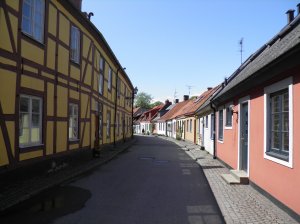
Those endless blue skies sometimes punctuated by glorious cloud formations can turn thunderous and glowering, then go dark for months at a time.
Some days in winter there are as few as six hours of daylight here. At that time the windswept Baltic breaks gloomily in white-flecked waves against that stormy shoreline and those remote houses in the pines look less like idyllic getaway homes than mysterious, inward-looking places holding secrets.
Mankell – who grew up in remote Sveg in central Sweden – knows small towns and their mentality. Sveg had fewer than 2000 people when he went to school there and lived with his father, a judge, in rooms above the courthouse. There too, as in Ystad, the landscape had its own character which impressed itself in the writer's mind.
But his Wallander series was always as much about changing culture as it is about solving murders and that, along with the character of Wallander himself, has made Mankell (who is married to Eva Bergman, one of Swedish filmmaker Ingmar Bergman's daughters) a forensic analyst of his country's psyche.
The media-shy Mankell has spoken of a darkness which spread through Swedish society after the murders of prime minister Olof Palme in 1986 and foreign affairs minister Anna Lindh in 2003, both killed on the streets of sophisticated and orderly Stockholm. The country which prided itself on how it had emerged as a liberal, industrious and egalitarian society now had doubts about itself.
Wallander, a man at the interface of decent society and its criminal element, is the cypher for this subtext in the novels, and a believable character whose life and attitudes change in the course of the stories.
He is separated but doesn't take off his ring despite his former wife having a new partner; works too hard, eats poorly and falls asleep on the couch; has a difficult relationship with his daughter who worries about him; sometimes snaps impatiently at colleagues, is impetuous and occasionally intemperate; his eccentric and senile father (an artist who paints the same image over and over) dies so Wallander worries whether he has been a good son . . .
All this plays out while around him the substructure of his society rips itself apart.
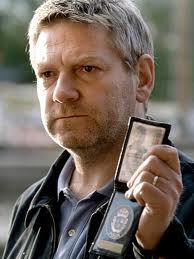 If this sounds melodramatic, it doesn't
translate that way in the film-length episodes of the BBC series,
which many Swedes concede is superior to the earlier Swedish
adaptations.
If this sounds melodramatic, it doesn't
translate that way in the film-length episodes of the BBC series,
which many Swedes concede is superior to the earlier Swedish
adaptations.
The unshaven, care-worn Kenneth Branagh plays the harried Wallander with understatement. Frequently Branagh's Wallander is seen quietly driving through that flat and beautiful landscape on empty roads. Or sitting alone in silence.
Unlike so many on-screen characters who seem emotionally immune to the world they confront – Jack Bauer in 24 is credited with over 250 killings in the eight seasons – Branagh's portrayal of Wallander invites the audience to enter his thoughts and doubts. He feels each death or confrontation deeply and is changed by them.
Of course, despite being filmed in Ystad and the surrounding countryside, this is a fictional world. But the look of the BBC episodes – darker, more grainy and moody than the equally fearful Swedish series – is remarkable.
Shot on cutting-edge digital cameras in often muted colour, the rooms can seem stylish but dated, suggesting Swedish optimism and innovative interior design gone to seed in sometimes claustrophobic spaces.
Exteriors are expansive however, the glowering sky or the sea-battered shoreline oppressive in their elemental power.
When you are in this southern part of Sweden, the landscape in all its moods seems a gift to a cinematographer and Ystad is so toy-town picture perfect it could only have a seething undercurrent.
Houses painted bright blue, rich red or gentle green, cyclists pedaling down a quiet cobbled street on a warm afternoon, those golden fields of rape shimmering under the high summer sun.
Just beautiful.
And, if you watch Wallander,
deadly.




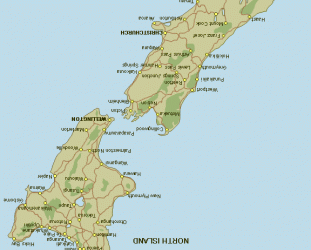
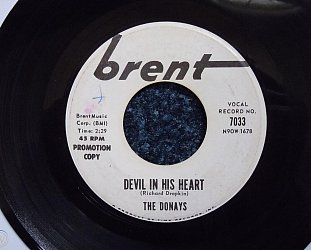
post a comment